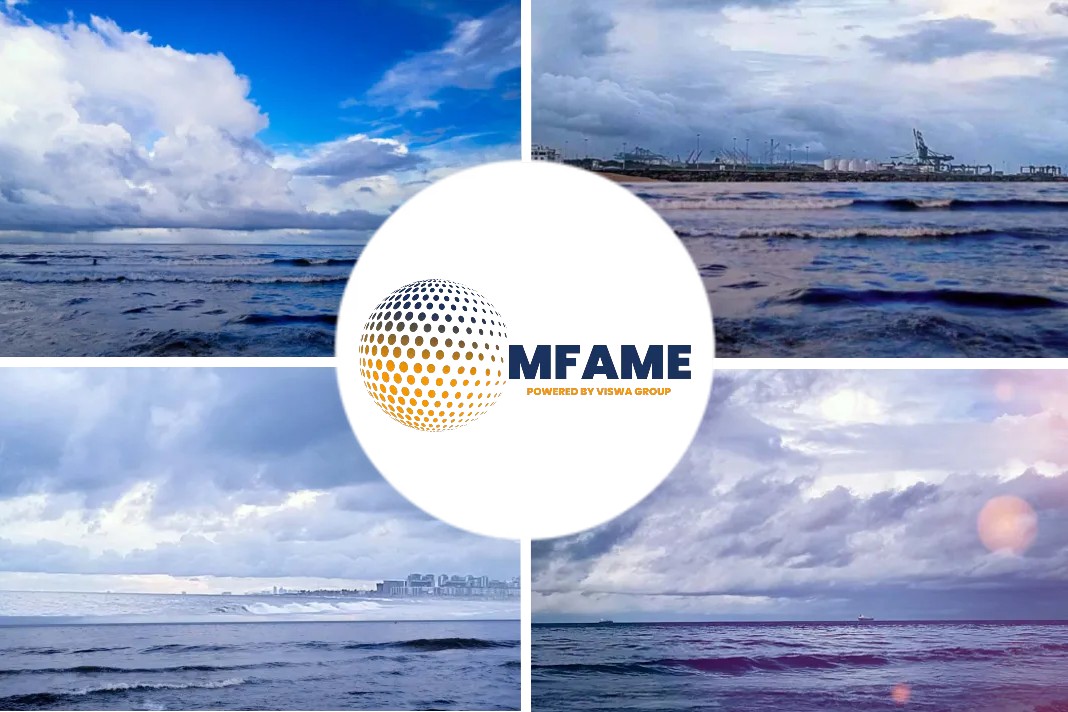
Ship fuel spreads and LNG prices fall to lowest levels in years, states a Freightwaves news source.
Different dynamics for ship fuel as war effect wanes
Fuel is one of the biggest costs in ocean shipping, and fuel pricing has seen some big changes in recent months, featuring new dynamics that haven’t been seen in years.
Prior to the IMO 2020 regulation implemented on Jan. 1, 2020, most of the world’s commercial ships ran on 3.5% sulfur fuel known as high sulfur fuel oil (HSFO). Ships with exhaust-gas scrubbers can continue to burn HSFO under IMO 2020, while others — the majority of the commercial fleet — have switched to more expensive fuel with 0.5% sulfur known as very low sulfur fuel oil (VLSFO).
The vessels with scrubbers that burn cheaper HSFO are predominantly larger container ships, tankers and bulkers doing long-haul runs. The discount of HSFO to VLSFO — the so-called Hi-5 spread — equates to savings on the fuel bill. The bigger the spread, the more ships with scrubbers save.
That spread has collapsed. Not only has it fallen from record highs seen after Russia’s invasion of Ukraine, it has tumbled back to levels last seen during the pandemic.
VLSFO-HSFO spread drops to $73 per ton
Ship & Bunker publishes the average price of marine fuels at the world’s top 20 refueling hubs. On Wednesday, the discount of HSFO to VLSFO dropped to just $73 per ton.
The last time it was this low was in early December 2020. The all-time low was $45 per ton in November 2020. The peak — $420.50 per ton — was hit last July.
When the spread spiked a year ago, pre-2012-built very large crude carriers with scrubbers were saving $24,000 per day in fuel costs, according to data from Clarksons Securities. On Wednesday, the savings were only $3,400 per day. Larger dry bulk carriers with scrubbers were saving $18,000 per day when the spread peaked a year ago. On Wednesday, they were saving just $2,400 per day.
Shipping lines scale back fuel surcharges
The spread is falling because VLSFO and HSFO prices are going in different directions. After peaking in mid-2022, both fell sharply and roughly in unison during the second half of last year. They began diverging this February.
According to Ship & Bunker data, the average price of VLSFO at the top 20 refueling hubs was $595.50 per ton on Wednesday. That’s down 15% from the average price on Feb. 1. The average price of HSFO at the top 20 hubs was $522.50 per ton on Wednesday, up 12% from Feb. 1.
Average VLSFO and HSFO prices are down 37% and 40%, respectively, from record highs after the invasion. In the container shipping sector, this has led to reduced Bunker Adjustment Factor (BAF) charges to cargo shippers.
Data from Distribution Publications Inc. (DPI) for five carriers – CMA CGM, Cosco, Evergreen, OOCL and Zim (NYSE: ZIM) – shows Asia-West Coast BAFs averaging $587 per forty-foot equivalent unit in the third quarter of 2023, down 33% from the high reached in Q3 2022 and back to levels last seen in Q1 2022.
LNG now 16% cheaper than VLSFO in Rotterdam
Beyond the unusually small VLSFO-HSFO spread, the other anomaly in today’s marine fuels market relates to liquefied natural gas, which is now cheaper than VLSFO or HSFO in the port of Rotterdam, Netherlands, for the first time in over two years.
LNG fuel was initially promoted to shipping (including cruise shipping) in the mid-2010s as a better way to comply with IMO 2020 than burning VLSFO or installing scrubbers. More recently, it has been pitched — more controversially — as a way for shipping to reduce greenhouse gas emissions.
There are 936 dual-fuel commercial ships capable of burning LNG currently on the water, with an additional 876 on order, according to Clarksons Research. But for most of these ships to actually use LNG, it needs to be competitively priced versus VLSFO.
The war caused LNG fuel prices to spike, with existing dual-fuel ships burning VLSFO, not LNG, as a result of the price differential.
More recently, European natural gas prices have plunged from war-induced highs as the continent cut industrial production and replaced Russian pipeline imports with seaborne LNG flows from the U.S.
Ship & Banker calculates the price of LNG based on the cost of the amount of LNG that provides the equivalent energy of 1 ton of HSFO. On that basis, it assessed the price of LNG in Rotterdam on Wednesday at $465 per ton, 16% below VLSFO and 4% below HSFO.
“We are now in a situation where the usage of LNG is financially advantageous compared to VLSFO,” said Alan Murphy, CEO of consultancy Sea-Intelligence.
Did you subscribe to our daily Newsletter?
It’s Free! Click here to Subscribe!
Source: Freight Waves
















